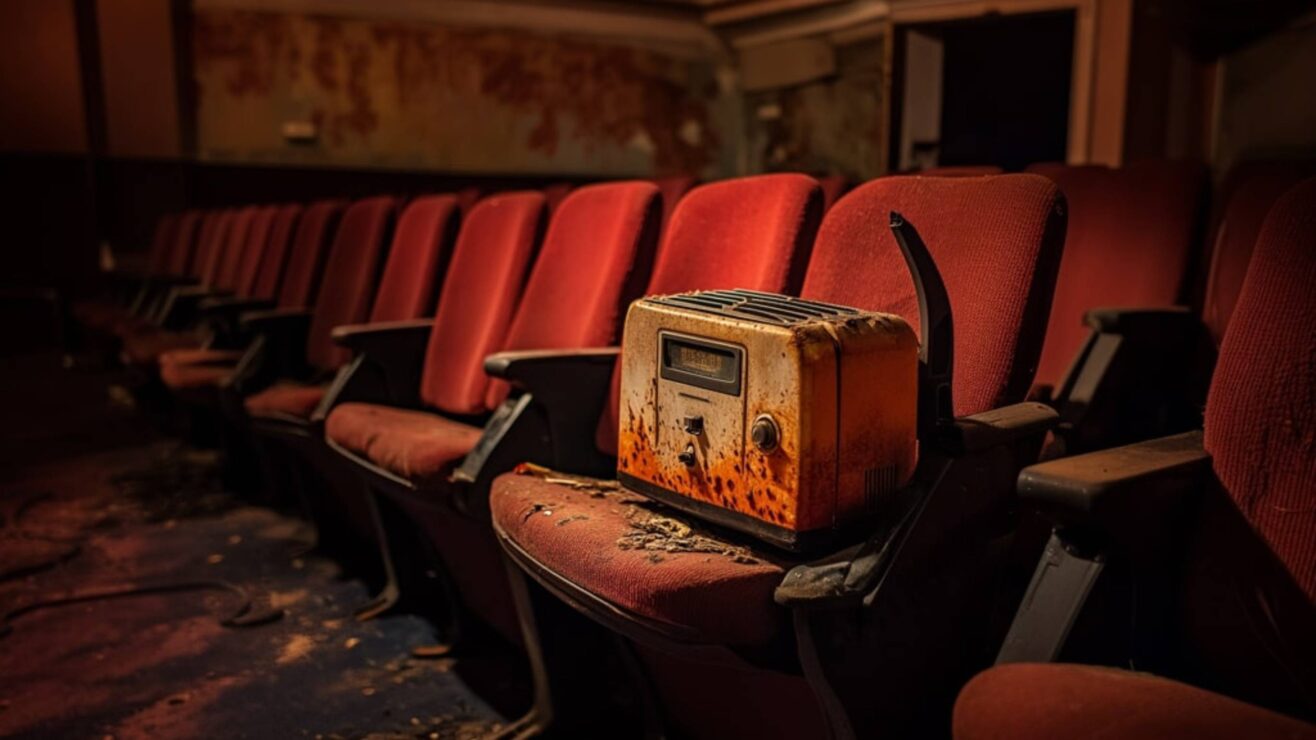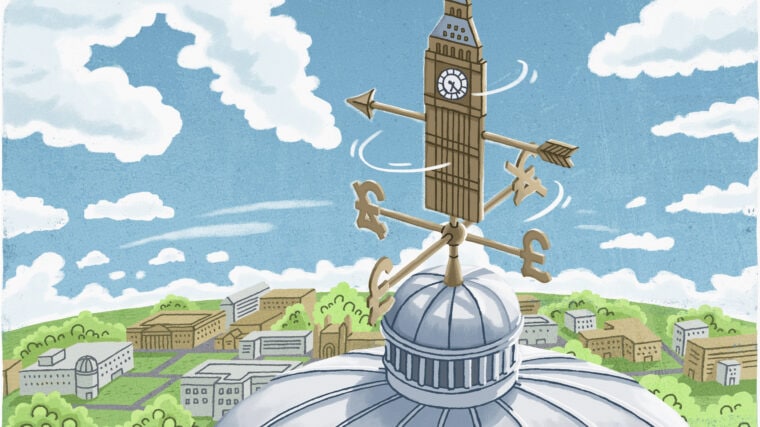There have been a lot of reports that argue that digital provision is the future.
It’s not that the evidence isn’t there in a general sense – clearly just in my lifetime the online connected world has changed nearly everything about the way we live, work, and learn. But nobody predicted the precise way that these changes would happen, and although it is both fun and important to speculate about what the future may bring we need to be clear about the limitations of these speculations. Many people predicted mass adoption of digital learning tools by 2020, nobody predicted this would happen because of a pandemic.
The thing about predictions – as even a cursory glance at social media during the US elections will illustrate – is that they are often conflated with wishful thinking. Many people are in love with the potential and possibilities of online learning, and this love can mean that more weight is given to research findings that back this up. We need to balance this enthusiasm with other signals that may point in other directions to build a truly useful and actionable prediction.
The new abnormal
The autumnal air has been thick with predictions that now is the moment for digital models of learning and teaching. Michael Barber – who has form with this kind of thing – has already offered early hints as to the need for radical, whole provider, change to meet the needs of students, drawing on responses to an OfS survey on digital learning and teaching.
Higher education has been forced by the need for social distancing and public health safety to adopt more learning technology than it would have otherwise have been comfortable with. This is a supply-side intervention – it represents the education providers are able to offer, rather than the education students are demanding. You just need to hear the howls of protest from halls of residence to know that.
The overwhelming majority of providers run at least one “virtual learning environment” and have done so for at least a decade. Whether it is as a true learning platform or a repository of lecture slides, the place of the VLE as a key component of the student experience is established. Likewise, recordings of lectures are now routinely available to students. What has changed during the pandemic is the growth in use of synchronous tools like Zoom – an expectation raised, in part, from the growth in social use of video telephony.
The new dawn
Jisc’s mammoth “Learning and Teaching Reimagined” report, drawn from numerous conversations and surveys of the sector – situates these Covid-driven trends within a wider political appetite for flexible and remote learning. CIting the laudable efforts made by staff to drive everything from high-stakes assessments to seminars and lectures accessibly online, the authors posit that given the will exists and the technology exists the missing capacity and culture will soon follow.
We’re shown indications that students have an appetite for blended provision (citing convenience and flexibility) given an appropriate social scaffolding and access to the right kit. This is unsurprising (though survey and consultation response numbers are low and should be treated carefully) but I am concerned about a potential category error – in a nutshell, students appear to be talking about revision and review, not learning.
Digital resources have always excelled for pre-exam cramming – they are available whenever the will to use them is there. But this strength is a strength of asynchronous learning, and has little to do with the emergency Zoom provision that has characterised 2020. If we believe that students think that:
“Students’ ideal learning mode is a blended approach using a mixture of pre-recorded, online and live, in person classes.”
then we are given an equally clear signal that live, in person, learning is here to stay – at the behest of students.
The new pressure
Before Covid, online delivery (as opposed to the notes plus recording blended default) was a specialist domain. There are a range of technical and pedagogic skills that underpin online synchronous learning delivery – and though we are past the (often invigorating) years of developments being driven by enthusiastic academics, the professions emerging still have a high skills need. You can double that for the domain of simultaneous online/offline provision – which was vanishingly rare in 2019 but near ubiquitous in 2020.
Academics who may never have intended to teach online have suddenly been required to do so. And Jisc’ survey does highlight an academic understanding that the specific skills required to do this need to be developed and supported. The calls recorded in the survey are for clarity, simplicity, technical support, and appropriate messaging. This is basic stuff, and it has not been there for many staff at the point it was needed.
The “inevitability” of a widespread multimodal provision shapes the responses of all university staff (including leaders) – and I’m nervous as to how much this prediction has been allowed to shape thinking in this area. It is also fair to predict that after a year of doing everything online, the tapering off of the pandemic will be accompanied by a reappraisal of the value of interpersonal contact. Jisc presented four scenarios for 2021, but the closest we get to this idea is the steady-as-she-goes scenario one.
This harks back to the kind of predictions that worry me most about education technology writing. If we build in an assumed direction of travel responses will focus on adaptation to a scenario rather than adaptation to an uncertain world. If we are doing a scenario based consultation, then scenarios should be generated by the community. This is hard stuff, but it is fair to expect it in a flagship report.
The new frontier
One argument that I used to hear a lot during the MOOC wars of 2012 was what I like to call the “argument from expansion”. Demand is rising, demographics demand expansion, so therefore the answer is technology. To a point, yes, but I’m not seeing evidence that the demand is for the technology mediated solution. As as far as there is a policy response to the likely future need for more higher education it manifests in two ideas:
- Expanding the sector (the HERA/Jo Johnson/David Willets model to encourage the growth of independent and innovative provision)
- Redefining the sector (the FE White Paper/Boris Johnson/Gavin Williamson model to offer short term, flexible, provision focused on economic and skills needs, perhaps via FE colleges and apprenticeships.
Either of these could encompass a level of online delivery, but not necessarily. There is a danger in changing the offer away from aspirations – most young people (and most parents of young people) are demanding a more traditional in person model and I don’t see an indication that this has or will suddenly change. Whatever the economic logic, the electoral impact of denying young people the university education their parents have is not one to be trifled with – as we saw during the examnishambles that provided a brief respite from the ongoing culture war sledging against “out of touch” ivory towers.
The report starts again with a presumption of change – and you could reel off the cultural and structural change recommendations that flow from this very easily. There have been people recommending these things since at least the turn of the century. One thing that is new – and welcome – is attention to the reality of digital poverty. It is easy to imagine that, in 2020, everyone is connected all the time – but the pandemic has brought home that many are not, and many are connected in ways that preclude (or make it exceedingly difficult to participate in) higher learning. The recommendation is a simple but powerful one – more funding.
The new future
Though a fair chunk of “learning and teaching reimagined” looks no further than the next academic year – the final quarter of the report takes us into the long term of 2030 strategic planning. For me, this is a specialisation decision – what kind of university would you be best placed to be in 2030? Everyone will have the kind of long term digital strategy that the report calls for, but this should be in service of rather than driving longer term institutional planning.
The guidance in this section is aimed at providers who decide that blended (in the fullest sense) or online provision is their preferred future. Read like this it makes more sense than the alternate, “hedge against uncertainty” framing that we are offered.
We get those vignettes of future daily routines that always enliven these future-gazing efforts – Lola is a student who has chosen remote learning to fit her life, Sam a lecturer who prefers to see students “holographically project” into his seminar room, Anita a leader of a provider who chose this strategic focus. This is one vision of the future, but not the only one – if it attracts you then Jisc has provided numerous tools to help you get there.
The old problem
If I sound like I’m down on this report, I’m not. It is well constructed and will be of use to many. The failings are the absolutist wish-fulfillment failings of education technology prediction in general, not of the authors in particular.
Technology is a substrate that makes up a component of nearly everything we now do. Like other tools it has strengths and weaknesses, and these may shift as unexpected or unpredictable future events (a pandemic, for example) mean that more use is made of it. It is neither sensible nor practical to expect technology to solve all of our problems, though it may play a part.
One day, one of these reports will start with learning rather than technology. The longer I worked in education technology, the more I understood that it wasn’t the shiny stuff that was important.














If the synchronous tool used IS Zoom then the student (if they have any means-of-access at all) can probably be join-confident.
But providers, for many good reasons, choose other software, possibly utterly alien to the Zoom norm.
This barrier (it seems like a little thing) creates several exclusion lotteries – organiser has speaker problems, microphone problems or both, student has speaker problems, microphone problems or both.
For non-interactive content no biggie – just watch it later on catchup (better even!).
For interactive, especially if that is the only opportunity you have to interact with that organiser this term, or if it is what they base assessment on, then this barrier (seems like a little thing) big effect.